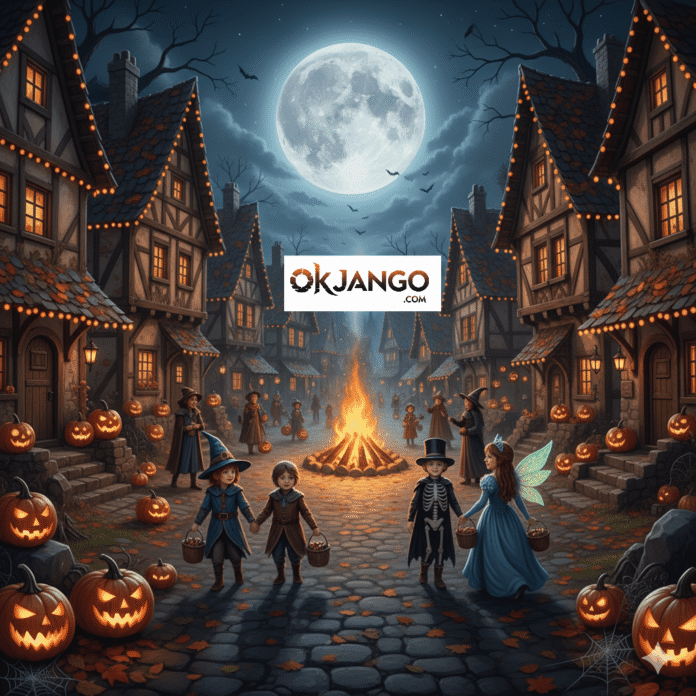On October 31st, people in many countries celebrate a holiday called Halloween.
It’s a time when people, especially children, dress up in costumes, go trick-or-treating for candy, and decorate their homes with spooky themes.
Ever wonder why these traditions exist? The answer lies in a rich and surprising history that goes back thousands of years.
Let’s explore the origins of this unique celebration.
A Glimpse into the Past: When Did Halloween Start?
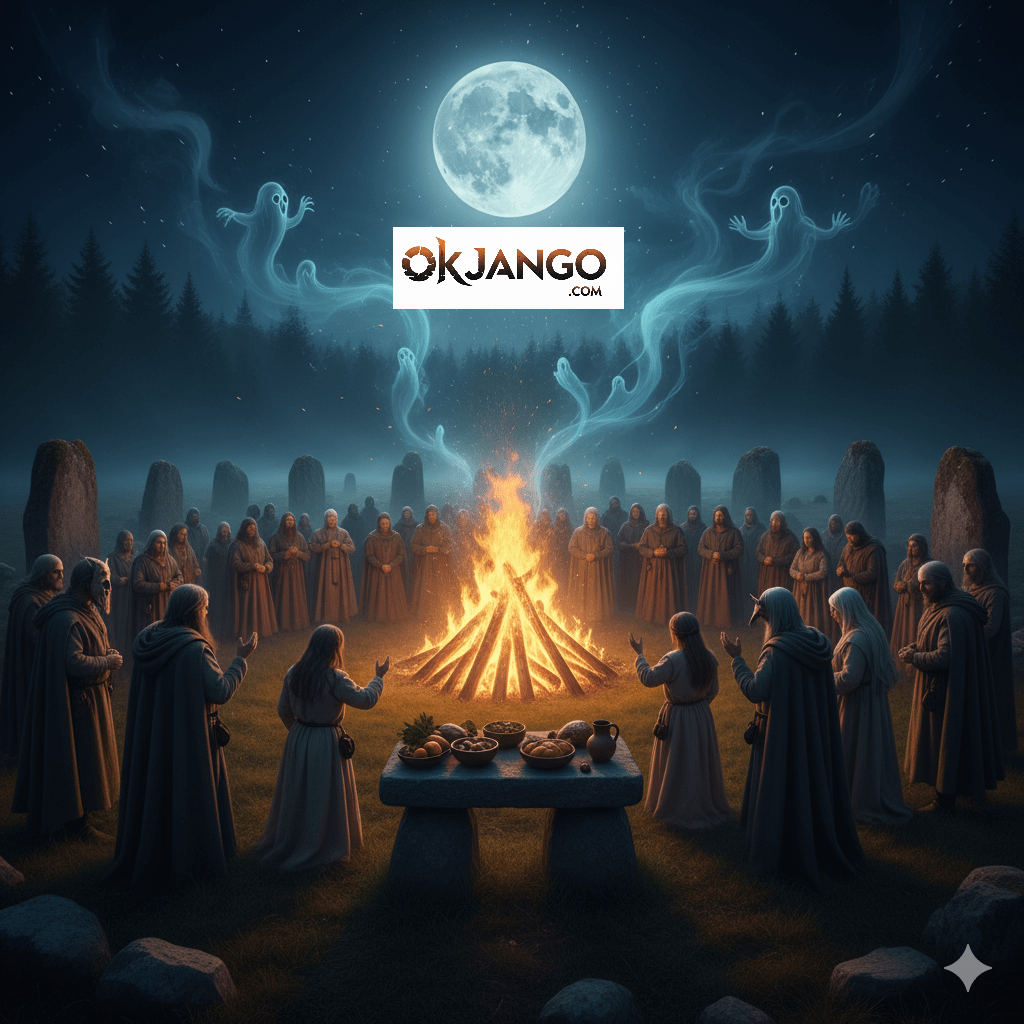
Halloween’s story began over 2,000 years ago with the Celts in Europe.
At that time, they celebrated an ancient festival called Samhain (pronounced sow-in). Specifically, it marked the end of summer and the harvest. Therefore, the Celts believed that on this night, the line between the living and the dead became blurred, so spirits could walk the earth.
As a result, this belief started all the spooky traditions we know today.
The Purpose of Samhain and Early Halloween

The goal of Samhain was simple: to honor the dead and prepare for winter.
To achieve this, the Celts would light huge bonfires in order to ward off evil spirits. Additionally, they would leave out food and drinks to keep the spirits of the dead happy. Finally, people also wore scary costumes to hide from wandering ghosts.
These ancient rituals are the very beginnings of the Halloween traditions we still have today!
How It Became Halloween
Over time, as Christianity spread, it consequently blended with these ancient traditions.
For instance, in the 8th century, the church declared November 1st as All Saints’ Day to honor Christian saints.
Therefore, the evening before, October 31st, was called All Hallows’ Eve, and this name was eventually shortened to Halloween!
In the end, the new holiday and the old Celtic traditions mixed together.
Why is Halloween So Popular?
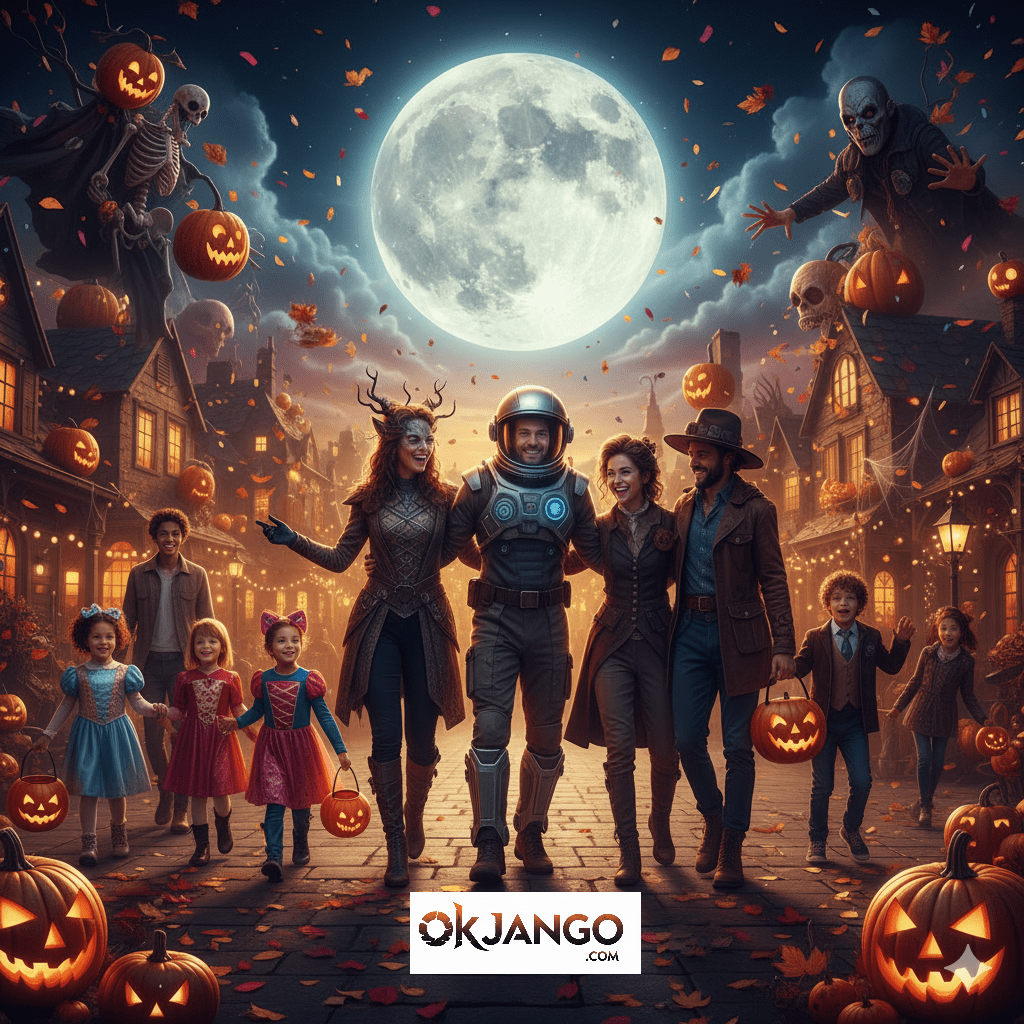
Halloween’s enduring popularity can be attributed to several factors:
A Creative Escape: It’s a chance to step out of your everyday life and become anything you can imagine.
Unleash Your Inner Artist: You can show off your creativity through costumes, decorations, and carved pumpkins.
Community Fun: Halloween brings people together, from trick-or-treating with neighbors to celebrating at parties.
A Fun Scare: It’s the perfect time to enjoy a safe thrill and embrace the spooky atmosphere.
Childhood Joy: For adults, Halloween offers a fun trip back in time, reconnecting us with our favorite childhood memories.
Major Countries and Their Halloween Celebrations
While its origins are European, Halloween has taken on a life of its own in various countries:
- United States & Canada (October 31st): These countries are perhaps most synonymous with modern Halloween.
Celebrations include extensive trick-or-treating, costume parties, haunted houses, carving jack-o’-lanterns, and decorating homes with spooky themes.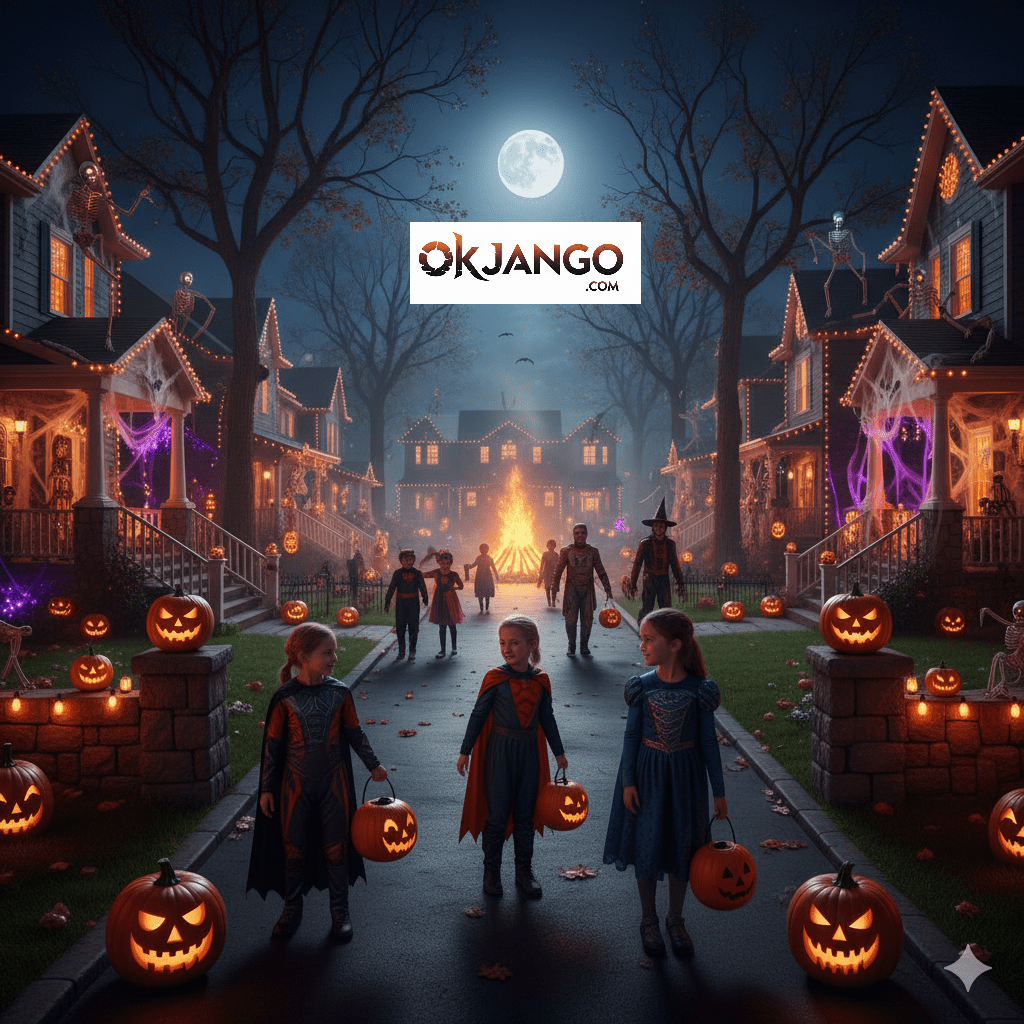
- Ireland (October 31st): As the birthplace of Samhain, Ireland still celebrates with traditional bonfires, games like “snap-apple,” and children dressing up and trick-or-treating.
- United Kingdom (October 31st): With trick-or-treating and costumes, some parts of the UK also have traditions like “guising” (children dressing up and performing a song or joke for treats) and “punkie night” (carving mangelwurzels or other root vegetables).
- Mexico (October 31st – November 2nd): Mexico’s Día de Muertos (Day of the Dead) shares themes of honoring the departed. It’s a vibrant and joyful celebration where families build altars, place offerings, and hold parades to welcome back the spirits of loved ones.
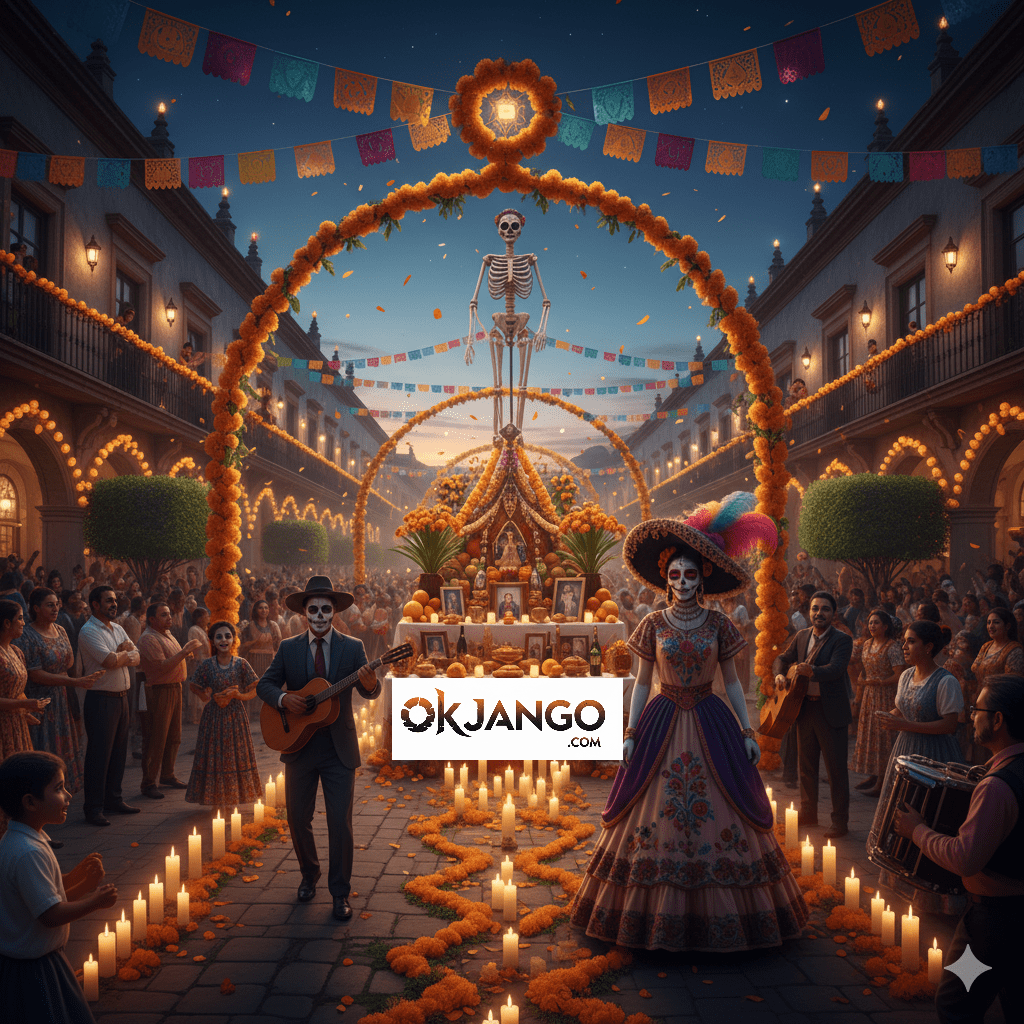
Fascinating Halloween Facts
- The World’s Largest Pumpkin: The heaviest pumpkin ever recorded weighed over 2,702 pounds (1,226 kg), grown in Italy in 2021.
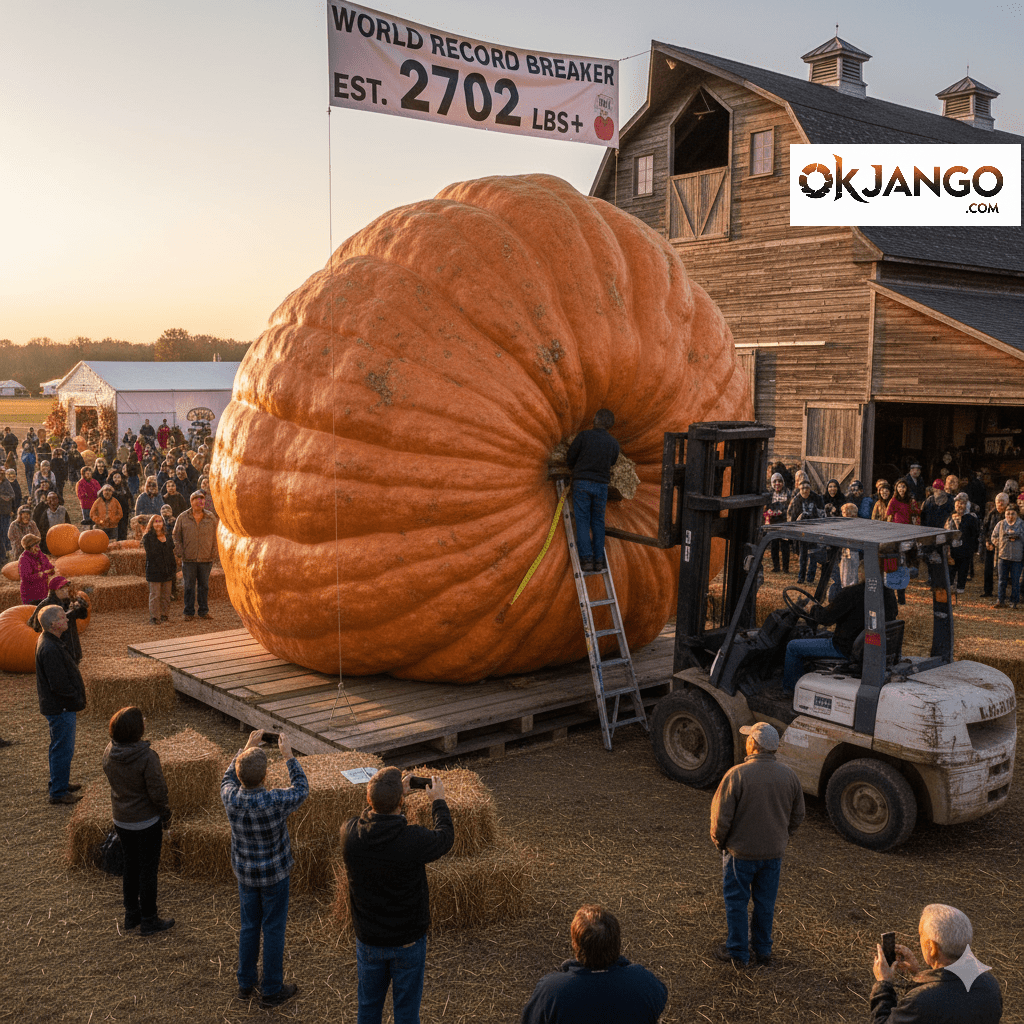
- Fear of Halloween: There’s actually a phobia called Samhainophobia, which is the fear of Halloween.
- Origami of Treats: The tradition of “trick-or-treating” can be traced back to the medieval practice of “souling,” where poor people would go door-to-door on All Souls’ Day for food and offering prayers for the dead in return.
- The Jack-O’-Lantern’s Roots: While we carve pumpkins today, the original jack-o’-lanterns in Ireland and Scotland were carved from turnips or potatoes! The tradition came from an old Irish myth about a man named Stingy Jack.
- Cats and Witches: Black cats became associated with Halloween and witches due to ancient folklore believing witches could transform into black cats, and that they were companions to witches.
- Colors of Halloween: The traditional colors of Halloween, orange and black, have symbolic meanings. Orange represents the autumn harvest and vitality, while black symbolizes death and the darkness of winter.
- Sweet Success: Over $3 billion is spent on candy in the U.S. for Halloween each year, making it the biggest candy-selling holiday!
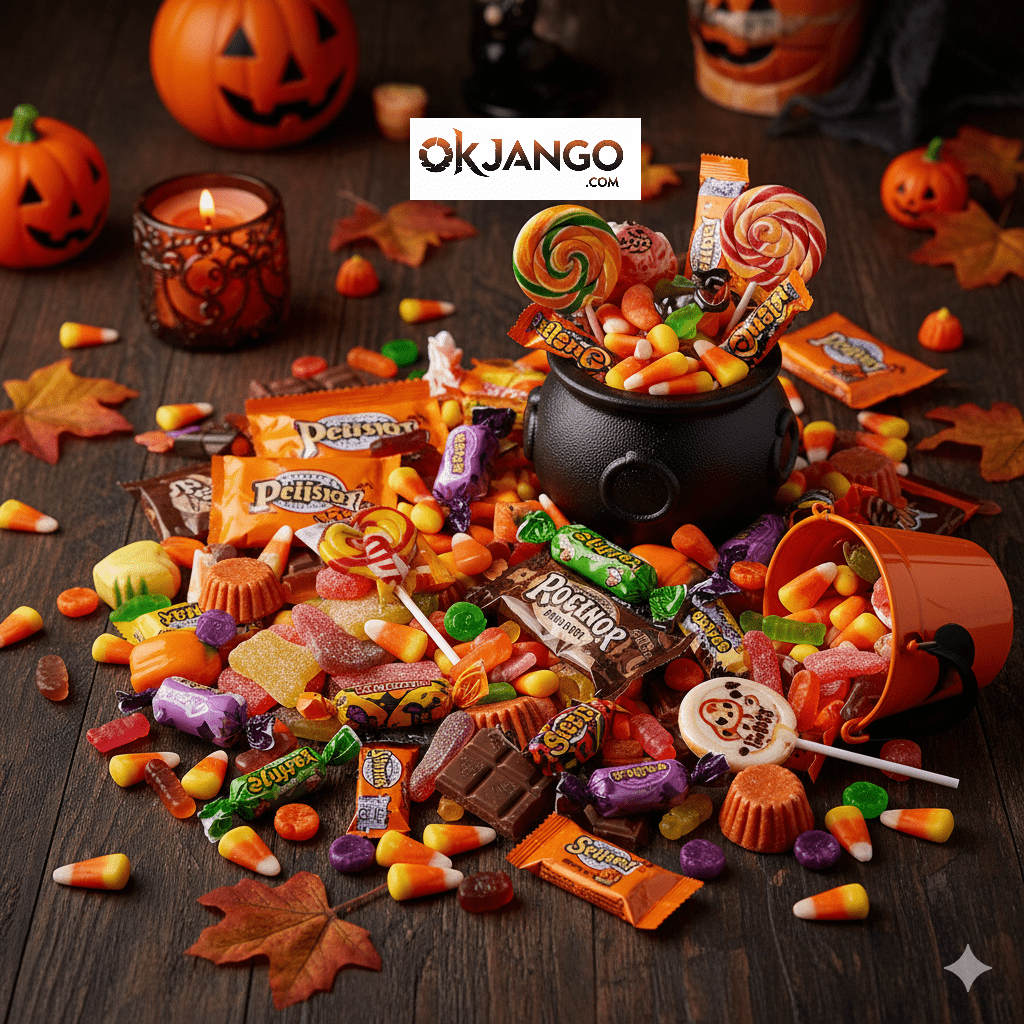
From a Celtic rite to a global event, Halloween still captures our imaginations. So, as October 31st approaches, enjoy the costumes, the treats, and the delightful chill in the air, knowing you’re part of a tradition that spans centuries and continents!
Halloween: Frequently Asked Questions (FAQ)
Origins and History
Q. What is the origin of Halloween?
Halloween’s origins trace back over 2,000 years to the ancient Celtic festival of Samhain (pronounced sow-in), primarily celebrated in what is now Ireland, the United Kingdom, and Northern France. The Celts believed that on this night, the boundary between the worlds of the living and the dead became blurred.
Q. What does the word “Halloween” mean?
The word “Halloween” is a contraction of “All Hallows’ Eve,” which means the evening before All Saints’ Day (or All Hallows’ Day), a Christian holiday celebrated on November 1st.
Q. Why do we wear costumes on Halloween?
The tradition of wearing costumes dates back to the Samhain festival. People would wear animal skins and masks to ward off or disguise themselves from the ghosts and evil spirits they believed crossed into the world of the living on that night.
Traditions and Customs
Q. When is Halloween celebrated?
Halloween is always celebrated on October 31st each year.
Q. Where did the tradition of Trick-or-Treating come from?
Modern trick-or-treating is influenced by several traditions, most notably the medieval English practice of “souling,” where the poor would go door-to-door on All Souls’ Day (November 2nd) asking for food or money in exchange for prayers for the dead. It became widespread in North America around the 1930s-1950s.
Q. Why do we carve jack-o’-lanterns?
The tradition of carving faces into vegetables originated in Ireland, where people initially used turnips or potatoes to create lanterns. These were meant to ward off evil spirits or, according to folklore, represent a figure named “Stingy Jack.” When the tradition came to North America, pumpkins were adopted as they were more readily available and easier to carve.
Q. What do the colors black and orange symbolize for Halloween?
Orange is traditionally associated with the autumn harvest, pumpkins, and the warmth of fire. Black represents night and darkness, which aligns with the theme of death, spirits, and the border between the two worlds.
Q. What is the most popular adult Halloween costume?
While popularity shifts yearly, Witch is consistently ranked among the most popular costumes for adults, often followed by characters like Vampire, Marvel/DC heroes, and seasonal villains.
Pop Culture and Fun Facts
Q. What is the most popular Halloween candy in the U.S.?
According to various polls and sales data, Reese’s Peanut Butter Cups are frequently named the most popular Halloween candy, often followed closely by favorites like Skittles and M&M’s.
Q. Which famous magician died on Halloween?
The famous escape artist Harry Houdini passed away on October 31, 1926.
Q. What classic horror movie features the masked character Michael Myers?
The character Michael Myers is the primary antagonist in the Halloween (1978) film series, directed by John Carpenter.
References
- History and Origins:
- Halloween: Definition, Origin, History, & Facts – Britannica
- A Brief History of Halloween – The New York Public Library
- Samhain – History.com
- Traditions:
- The Origins of Halloween Traditions – Library of Congress
- Around the World:
- Halloween and Harvest Traditions Around the World – The University of British Columbia
Read more blogs at : Okjango.com


